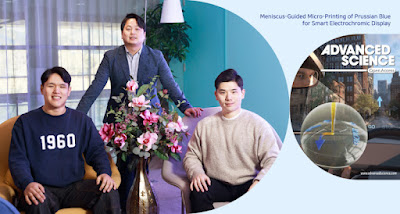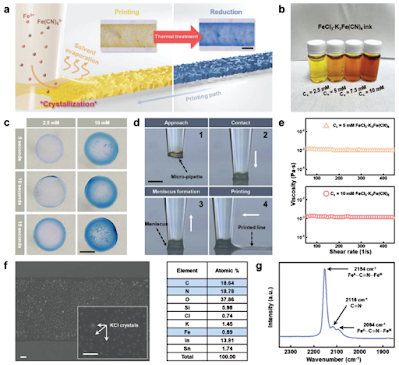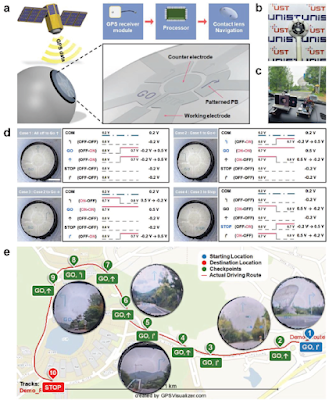|
About Topic In Short: |
|
|
|
Who: Researchers at Princeton University led by Kaushik
Sengupta. |
|
What: Innovation of a shape-shifting antenna array based
on origami design that offers reconfigurability and adaptability, with wider
resolution and capturing complex three-dimensional scenes beyond the
capability of a standard antenna array. |
|
|
How: Installed a new class of broadband metasurface
antennas onto standard, flat panels and connected a number of the antenna
panels into a precisely designed origami surface with an offset checkerboard
pattern. The array assumes a variety of different shapes like curves,
saddles, and spheres by folding and unfolding the panels. |
|
Introduction:
The ever-growing demand for better sensing and imaging capabilities in autonomous vehicles, robots, and cyberphysical systems has led researchers at an Ivy League university to introduce a unique type of antenna array. The Waterbomb Origami Antenna Array, designed like a folded paper box, promises to provide significant improvements in sensing technology by enabling a reconfigurable and adaptable radar imaging surface that captures complex three-dimensional scenes beyond the capability of traditional antenna arrays.
Waterbomb Origami Antenna Array Creation:
To create the Waterbomb Origami Antenna Array, a new type of broadband metasurface antennas were installed onto standard flat panels. These panels were connected into a precisely designed origami surface with an offset checkerboard pattern. By folding and unfolding the panels in specific sequences, the array can assume various shapes, such as curves, saddles, and spheres. The simplicity of individual antenna systems means the sensing arrays can be lightweight and cost-effective, making them more accessible for wide-scale deployment.
Advancements and Applications:
In combination with advanced algorithms, the Waterbomb Origami Antenna Array can effectively process information from a range of electromagnetic fields, expanding the capabilities of devices used for sensing and imaging. The array's shapeshifting ability enables engineers to expand their ability in computer imaging, similar to a transformer robot. This could be valuable for vehicles and robots that require intensive communications while working in different environments. It could also be useful for other electronic structures that require folding and tuning, such as spacecraft and solar panels.
The Waterbomb Origami Antenna Array has a wider resolution and can capture complex three-dimensional scenes beyond the capability of traditional antenna arrays. The antenna can also morph its shape to manipulate electromagnetic waves in calibrated ways, making it suitable for various applications, including robotics, self-driving cars, smart cities, healthcare applications, artificial and virtual reality.
Expert Opinion:
Kaushik Sengupta, an associate professor of electrical and computer engineering, said, “Reconfigurable systems allow us to substantially expand our ability in computer imaging. By using origami, we can combine the simplicity of planar arrays with the expanded ability of reconfigurable systems. With the development of advanced signal processing, we can create highly efficient imaging and radar systems.”
Conclusion:
The Waterbomb
Origami Antenna Array offers improved sensing technology for various
applications. Its shapeshifting ability to take on shapes like curves, saddles,
and spheres, and its ability to process information from a range of electromagnetic
fields, offer a wider resolution and the ability to capture complex
three-dimensional scenes beyond the capability of traditional antenna arrays.
With the development of advanced algorithms and in combination with origami
principles, the possibilities for future advancements in imaging and radar
systems are endless.
|
Image Gallery |
|
Author Kaushik Sengupta in Laboratory with his prototype. |
|
Shapeshifting antenna array promises improved sensing technology. |
|
Origami allows engineers to rapidly shift arrays of antennas, greatly increasing their capabilities. |
|
All Images Credit: from
References/Resources sites [Internet] |
Hashtag/Keyword/Labels:
#ShapeshiftingAntennaArray #OrigamiAntenna
#RadarImaging #AutonomousVehicles #Robots #CyberphysicalSystems
#WirelessCommunication #MetasurfaceAntenna #BroadbandAntenna
#ElectromagneticWaves #SensingTechnology
References/Resources:
For more such blog posts visit Index page or click InnovationBuzz label.
…till next post, bye-bye and take-care.
























